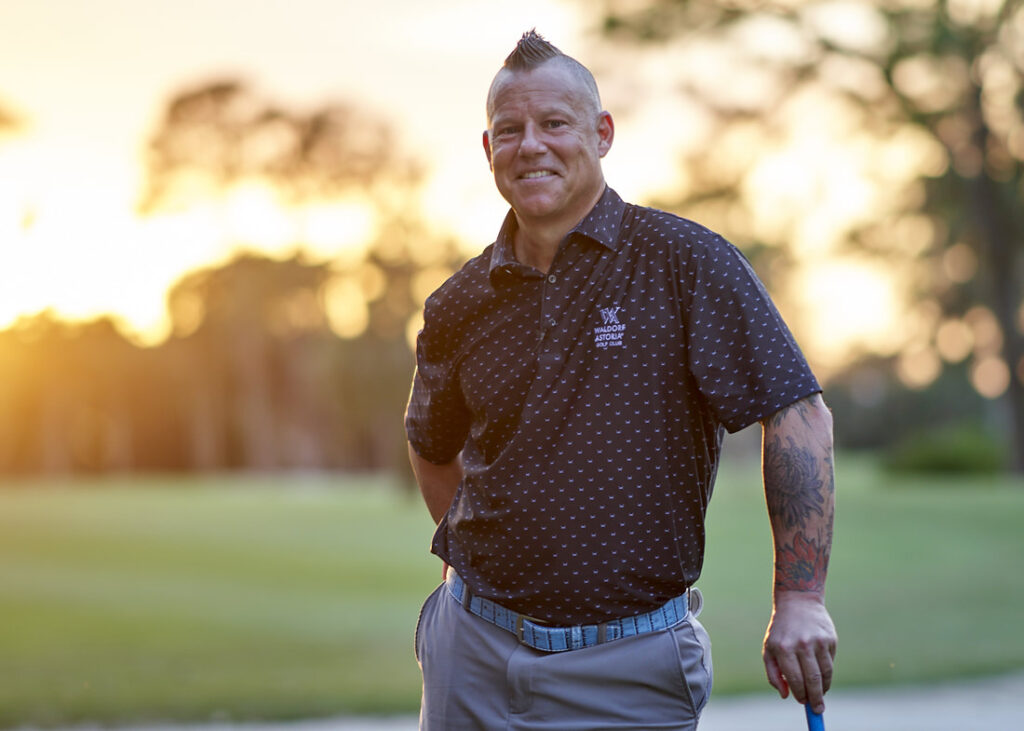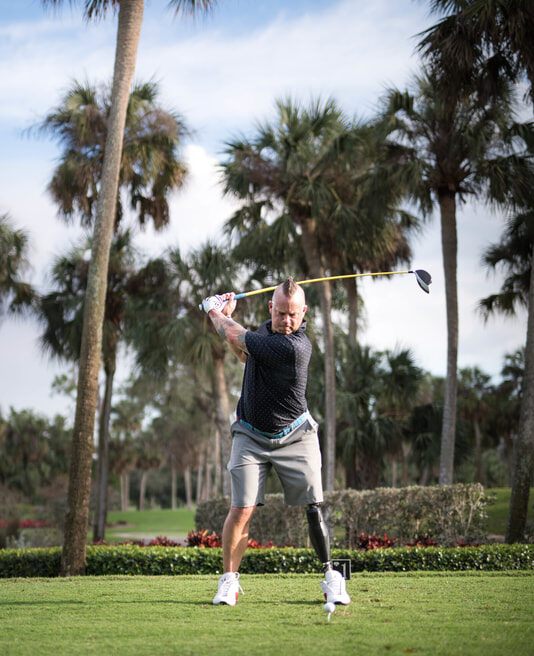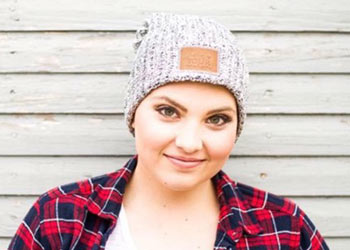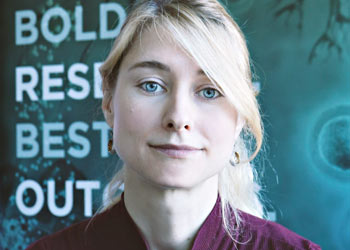
Kenny Bontz has faced his share of challenges in life, but these obstacles helped shape him into the man that he is today, and set him on a path to inspire others.
When Kenny was 19 years old and working as a printing machine operator, a coworker dropped a 3,000 lb. roll of paper on him, crushing him into a wall.
“I got an X-ray to see if there were any broken bones, and they did a biopsy and diagnosed me with osteomyelitis, which is a bone infection,” Kenny explained. That was a misdiagnosis.
Beating the Odds
A month later, Kenny stood up to walk for the first time since his accident and his knee began to swell. The doctor did another biopsy, and that’s when they saw the tumor.
“I called my dad that night – and I’m not one to show emotion at all – but I was hysterical because I knew something wasn’t right,” said Kenny. “My family came back in the morning and we were told that I had Ewing sarcoma.”
Ewing sarcoma occurs primarily in the bone or soft tissue, and most often is diagnosed in adolescents, with nearly half of cases arising between the ages of 10 and 20.
“Being a diabetic, my chances of beating the disease weren’t the best,” he said. “But I was a fighter at that point. I said, ‘ok when do we start, and what do we have to do?”
Kenny went to Memorial Sloan Kettering Cancer Center for treatment with Dr. Paul Myers. Like most pediatric cancer patients, he experienced side effects from the treatment.
“My heart beat changed due to the chemotherapy, and I went from 188 lbs. to 119 lbs. after six cycles of chemo,” Kenny said. “They actually don’t even use the treatment protocol that I received anymore because it could cause heart failure.”
In addition to chemotherapy, doctors removed his tibia and put in a cadaver bone. Cancer-free and finally able to walk again after about a year, Kenny began coaching soccer.
“A kid kicked me in my shin and broke the bone. It’s dead bone, it won’t heal, so they had to redo the surgery,” said Kenny. “After the surgery, they weren’t able to close my leg because it was so swollen, so they had to cut off my femur head. That’s when they gave me the artificial knee replacement and tibia allograft.”
The Amputation

After breaking his artificial knee and having multiple surgeries, it was becoming increasingly difficult for him to deal with the pain.
“I was up to 80 Vicodin a day, and I remember thinking about the 53 employees who looked up to me to make decisions,” Kenny said. “I woke up one day and decided I couldn’t live like this anymore.”
So, Kenny made the difficult decision to remove his leg.
“We were having dinner when he told us he was going to amputate his leg. I went into my bedroom and just cried,” said John Bontz, Kenny’s father.
“He had diabetes, and then to get cancer and have the amputation, it was a very difficult time for everybody,” said Marion Bontz, Kenny’s mother. “You can’t stand to watch your kid suffer like that.”
On the day of his surgery, Kenny said goodbye to his leg, and his reliance on pain medication.
“In recovery, I had a Dilaudid drip in my arm because of the pain that I was going to face,” he said. “I took the drip out and that was the last ounce of any drug that was in my veins.”
Inspiring Others
Kenny is a childhood cancer survivor, and an advocate for children facing challenges in life.
“I want to inspire people. I want someone to look at me and say because of you, I don’t give up.” -Kenny Bontz

One of Kenny’s biggest passions is golf, and he’s had the opportunity to travel the world to play in tournaments in four different countries. He’s also been involved with the Champions for Children (C4C) nonprofit for a number of years, which hosts an annual event to raise money for organizations that support children, including CureSearch for Children’s Cancer.
Kenny is now looking forward to completing his next goal, which is to become the first amputee to play on the PGA Champions Tour.
“My goal now is to help people,” said Kenny. “If I can get on a worldwide level to help a young kid who might be struggling with something, then maybe that’s my place now. Maybe that’s why I’m here.”
CureSearch works to ensure every child diagnosed with cancer has a safe, effective treatment option and the best chance of survival. Donate today and make an impact for survivors like Kenny this National Cancer Survivors Month.



